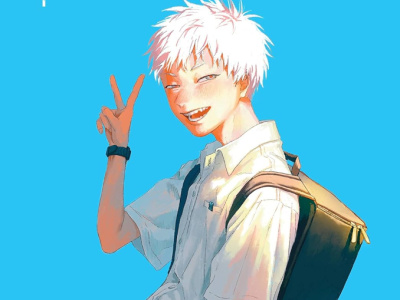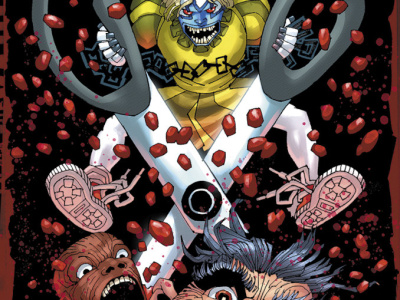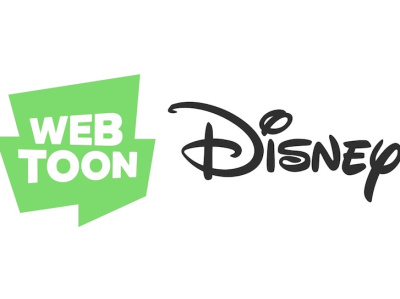
We recently caught up with Tokyopop Publisher Mike Kiley for one of our periodic interviews on the state of the manga market and Tokyopop's place in it. In Part 1, we talk about the over-all manga market and its breakdown by country of origin. In Part 2, we talk about the surge of manga releases coming up this fall, the market in
From the Tokyopop viewpoint, what's the status of the North American manga market in 2007?
In a word, I'd say it's vigorous. I'd say it's clear that over the past couple years, the growth level wasn't what it was maybe three or four years ago, but it continues to be very healthy. It continues to be a pretty vibrant marketplace. Clearly there is a ton of competition for shelf space--not only from people that have been in the space for a number of years, but from relative newcomers. Some of those newcomers are small companies; some are larger, more traditional houses.
The result is a really dynamic situation in which there's a tremendous amount of product competing, chasing a finite amount of shelf space. But in the end, quality conquers all. What I think it means for the consumer is a real golden age in terms of the availability and access to an incredible variety of content.
Can you talk a little about some of the components of that growth--specifically we're interested in your thoughts on different rates of growth between Japanese, Korean and original English language content.
That's a really interesting question. I don't know that I typically look at it in quite those terms. Cleary the blockbusters in the category continue to be extremely well-known Japanese licenses. Even more specifically, they tend to be more often than not to be Japanese licenses that have multiple incarnations across different formats. I think specifically the Naruto's and Fruits Basket's and Tsubasa's continue to be the market leaders in terms of unit sales. I believe the growth in those areas is still significant--every new volume in each of those really high profile series tends to chart a little higher than it did before, so I think there's a lot of growth there.
The Korean stuff is clearly not producing that same level of hit, but I believe there's an amazing quality and quantity of material coming out of
The original English language stuff (I refer to that more as global manga, in this market it's of course original English language) is the stuff that as a percentage year over year, from our perspective, is growing the fastest. When we began our grand experiment four or five years ago with the first Rising Stars of Manga contest in an attempt to grow our original IP program, we weren't really sure what kind of obstacles we might be up against. At that point there was a lot of preference for certain kinds of material with certain kinds of pedigree on the part of fandom, and we knew we had a pretty tough road to travel in certain respects.
What's become clear to us over the past couple of years is we've actually built series from scratch, whether they're things like Princess Ai or Dramacon or I Love Halloween or Bizenghast, that are not only our top sellers, but regularly chart in prominent positions in Bookscan. As a percentage of growth year over year, those things are probably the fastest growing category in my opinion.
Where do you think the consumers are as far as identifying manga as from
I think it's definitely more into the latter. I've been involved in various ways with the fan community in the anime and manga universes for about 12 or 13 years now. With each succeeding mini-generation, I think there's been more of a shift toward a more open-mindedness, a little bit more willingness to accept the diversity of material that manga represents, and I think it's a function of people becoming more savvy about the content being more important than the pedigree.
Back in the day, when not a lot of Japanese manga was available on the market, there was a stereotypical view that evolved about what manga 'looked like.' I think one of the things that's happened over the past several years is that because people are much more sophisticated about manga from Japan, there's now a growing awareness that manga--even in its heartland in Japan--is so artistically diverse that it's very difficult to pigeonhole it into one artistic look. It's an aesthetic, rather than a specific artistic style. I think that that awareness has percolated through the generations--kids now seem much more interested in if something looks and feels cool, whether the story and art are compelling, whether it's fresh and original. I would say more or less, those barriers have been completely eradicated.
It's still the case that the reason that Naruto and Fruits Basket sell in greater numbers than a lot of 'original titles,' is because they're really good stories. I don't think you can really hang your hat on 'they sell because they look a particular way.'
Tokyopop recently had a #1 title on the graphic novel charts, based on a young reader novel series, which we'd never seen before. It seems on a sales basis, the titles are hitting a new level they've never reached before.
You're talking about Warriors. One of the most significant components of our co-publishing program with HarperCollins is to take well-known YA novel properties and develop original manga stories set in those universes. One of the most exciting things about those programs has always been the prospect that they would attract new readers for sequential art. When we tell the co-pub story to our partners in Japan, they're enormously excited and interested, because they recognize the commercial clout of these properties, first of all; and they also recognize the fact that because the books are being shelved adjacent to the novels themselves, rather than in the graphic novel category, they're likely to expose new readers to manga as an art form.
I think it's too early to tell, because we've only released a couple of books in that program (the third Vampire Kisses comes out next month) exactly how that's going to play out. Probably close to 100,000 kids have purchased Warriors now--how many of them will go on to read other kinds of manga or comics? Who knows at this point, but it's definitely an exciting trend.
So you rack that title with the fiction rather than in the graphic novel area, or both?
Warriors is what's known in the trade as a mid-grade novel. The manga was initially racked in a PoP display, right next to a new Warriors hardcover novel. Once it made its way to the shelves, it's shelved in the mid-grade fiction section.







